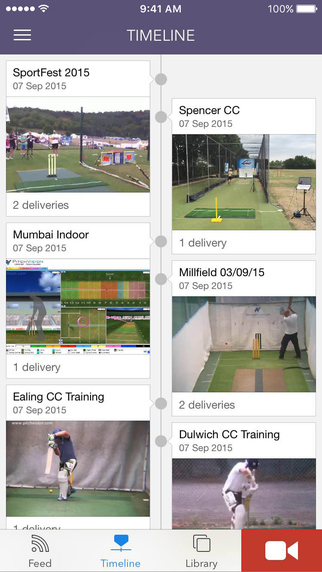|
 All year, every year club, school and Academy players head to nets. As the aim is to improve, how can we make nets achieve that aim? All year, every year club, school and Academy players head to nets. As the aim is to improve, how can we make nets achieve that aim?
For the thinking cricketer, there is a list of things that make you say, "I must try that". Somehow you never get round to it and end up doing the same thing you always did.
That's fine if it works for you, but there is a famous saying; "do what you always do to get what you always got". So ask yourself; can you improve things?
If you can, should you try one or two from the list below this year?
What's the worst that can happen?
1. Plan ahead
What's your plan at practice?
Just by answering that question you will get more from your practice. It's all about focus. It's well proven that when you are focused on a specific aim, you are far more likely to succeed.
You wouldn't set off on a journey to somewhere new without a map or GPS. The same applies.
Don't rely on the coach to make a plan for you. They might, but it's not going to be as good as one you make yourself.
Don't think "I just want to hit balls" is a plan. It rarely is.
Think about what strength you can turn into a super strength, what weakness you can bring up to scratch or what new thing you can learn. Then go do it.
2. Warm up
Warming up is like flossing or eating vegetables: We know it's important yet not enough of us do it.
How many net sessions have you been to where there has been no warm up? Plenty I bet.
How many net sessions have you been to where the coach or captain has lead a warm up? The rest I'm sure.
In over 20 years of coaching and playing, I can think of exactly three players who warmed up without prompting. It just doesn't happen. It's is even still seen as a bit weird.
It isn't weird. Warming up - when done right - is proven beyond doubt to stave off injury and improve performance. If you are a fast bowler warming up is beyond essential, it makes you bowl faster. If you are a fielder warming up will get your throw quicker and more accurate. If you are a batsman warming up will help you hit the first half volley for four.
If your team doesn't have a warm up culture, or has one that doesn't work for you, then do your own.
Get there a bit earlier and do what you need to do before anyone else arrives. It shows deep commitment, it improves performance and helps you stay on the park.
3. Keep score
If we go to every practice with a plan, the next step is to measure how you are going. You do this by keeping score at practice.
The big benefit of measurement is you can see the big picture. We are terrible at remembering how we did, but recording how you did solves that issue, shows you areas to improve and builds confidence as you improve.
There are a million ways to keep score, with PitchVision a very simple way to track things as you go. Here are some of my favourites:
There are plenty more.
You don't have to measure every little thing every time, but keeping a running score with testing is a powerful way to see how you are going and make adjustments if you need to.
5. Use video
Another underused part of practice is video. Yet again, we all think it's a good idea, but the practice is thin on the ground. I don't recall the last time I saw a player at nets actively ask to be filmed.
But don't we all have a camera in our pocket thanks to our smart phones these days?
Perhaps it's the stigma of asking your mate to film you. To that I say, get over it. The benefits far outweigh the shame. And anyway, if everyone does it, it's no longer embarrassing. So pair up with someone who films you and in return you film them. Use the PitchVision app on Android or iPhone and go for it.

The other option is to use PV/VIDEO. You can set up a couple of cameras in the net that attach to a laptop to record every ball automatically. Imagine being able to call up all the balls you bowled or faced instantly and filter them by type of ball. That's next level stuff accessible to any club or school. It goes into any net like this:

My challenge to you is to try these things over the next few net sessions and find out what sticks. Nets are much better when you are that little bit more mindful. Find out for yourself.
Discuss this article with other subscribers
|

.jpg)



.jpg)

